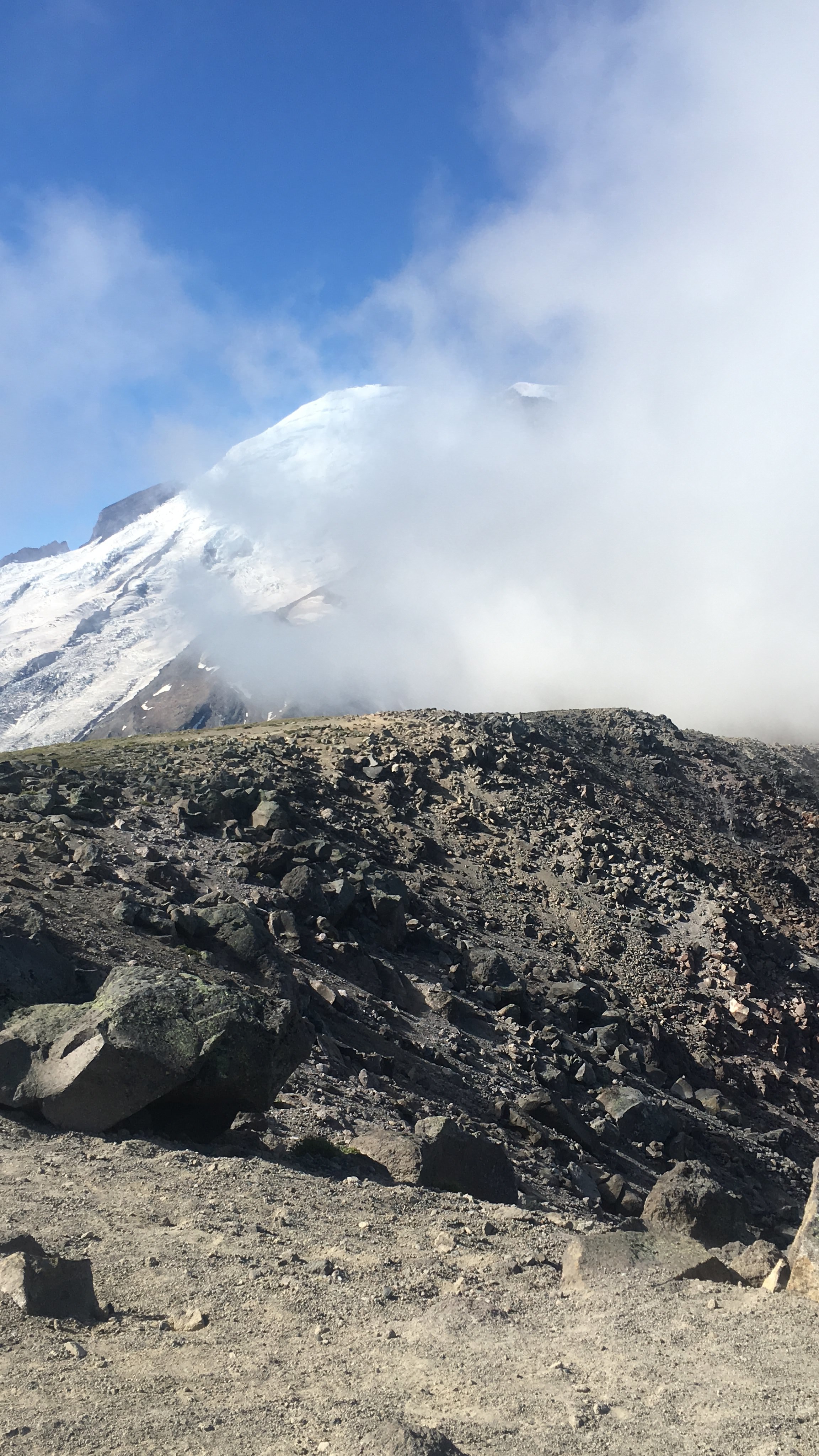Have you begun to plan your next visit to Washington State or Seattle and you are trying to figure out the best time to visit Mount Rainier? We hope what follows helps you in your planning!
To start, nothing beats summer in the Pacific Northwest. Nothing. And I’ll fight you on that one. The temperatures are usually between 70 - 80 degrees with no humidity. Which makes it pleasantly warm but not melty. The rain that Seattle is notorious for usually keeps itself to the winter and spring months, November - April. But beyond that, you start to get into some truly delightful weather.
Summer Paradise
A visit to Mount Rainier National Park can be beautiful at any time of year but summer is really when she starts to show her beautiful colors. And summer on the mountain starts late. You can expect there to continue to be snow into July at the higher elevations. This means if you are looking for a plethora of wildflowers at Mount Rainier you’ll be able to see them in June at lower elevations, and July and August up in those high meadows. The plants have such a short window of time to emerge from the snow, flower, and then seed.
If you have lots of flexibility in your travel I would shoot for the last two weeks in July or first two weeks in August for the best wildflowers. My personal favorite hike for Wildflowers is the Burroughs Mountain Trail. It starts at Sunrise through mountain meadows and then climbs quickly to the subalpine tundra, a rare ecosystem that is only found in a handful of places in the Unites States. There, the delicate wildflowers cling to the metamorphic and volcanic rock along the wind swept ridges. Their only threat the hooves of mountain goats, the step of humans, and the elements. Adventures In Seattle offers guided hiking tours on Mount Rainier on this trail and its no surprise it’s our most popular hike.
The more popular Skyline Trail departs on the South side of the mountain from Paradise. Also a great location to see wildflowers, you’ll also be delighted by lots of marmots busy collecting their stash of food for the winter. That being said if you want a high chance of seeing mountain goats at Mount Rainier, opt for Burroughs Mountain out of Sunrise (North side) instead.
Fall colors
To be fair, Fall probably is in a tie for spring on the best time to visit and while spring will have a gentle transition to summer on the mountain, Fall is often short with winter coming on abruptly and unexpectedly. Yet Fall on Mount Rainier can be a surprising delight. The months of September and October are where we quickly see the effects of colder nights and shorter days. The wildflowers will continue to try their best but at this point most have gone to seed and their unique seed heads are definitely different than their vibrant flowers. While the upper levels of the mountain are covered in evergreens up until tree line, the lower shrubs and bushes take on the task of showcasing the vibrant fall colors and do a respectable job. Early snowfalls leave a dusting of white along the slopes to add to the magical landscape.
SPRING waters
Avalanche lilies and trillium abound in the steep slopes and the first wildflowers to emerge on the wet lower trails. Comet Falls is one particularly stunning hike that showcase these delicate flowers. And as the snow retreats, the parade of flowers chases it back up the mountain. Spring can be a long process depending on how quickly the snow melts. Creeks are high with spring runoff and the falls along the route to Paradise dazzle with Narada Falls and Christine Falls being easily viewable from pull-offs along the road. The aforementioned Comet Falls takes a bit more effort but rewards its visitors with a breathtaking plunge to the pool below. Spring encompasses April, May and June.
winter Wonderland
It seems almost unfair to rank the seasons with winter on Mount Rainier deserving it’s own stand alone podium. The mountain transforms under her blanket of white snow. And for the brave, bold adventurer that straps on snowshoes or skis, she becomes an unexplored landscape unrestrained by the trail. The meadows become passable with the dormant flora protected by a huge mattress of snow. You can quite literally, go anywhere. Such a playful wonderland rewards the well prepared hiker. Because as beautiful as the mountain is in winter, she can easily turn deadly in what seems to be a blink of a frosted eye. Avalanches, severe weather and white out conditions can easily defeat the ill prepared visitor. Much of Mount Rainier National Park is inaccessible in winter. The road to Sunrise is closed, usually re-opening in June. And the road to Paradise is limited to available staffing levels and at the mercy of the frequent snowstorms. Yet the quiet winter slumber of the mountain means less crowds and peace and tranquility once you venture away from the parking lots.
Mount rainier hiking tours
Adventures In Seattle offer Mount Rainier hiking tours in the summer months - July through September. Our guided hikes at Mount Rainier take you on the Burroughs Mountain Trail. You are guaranteed to see wildflowers and wildlife along this six mile trek. Locals and visitors alike agree it is the best trail at Mount Rainier.








